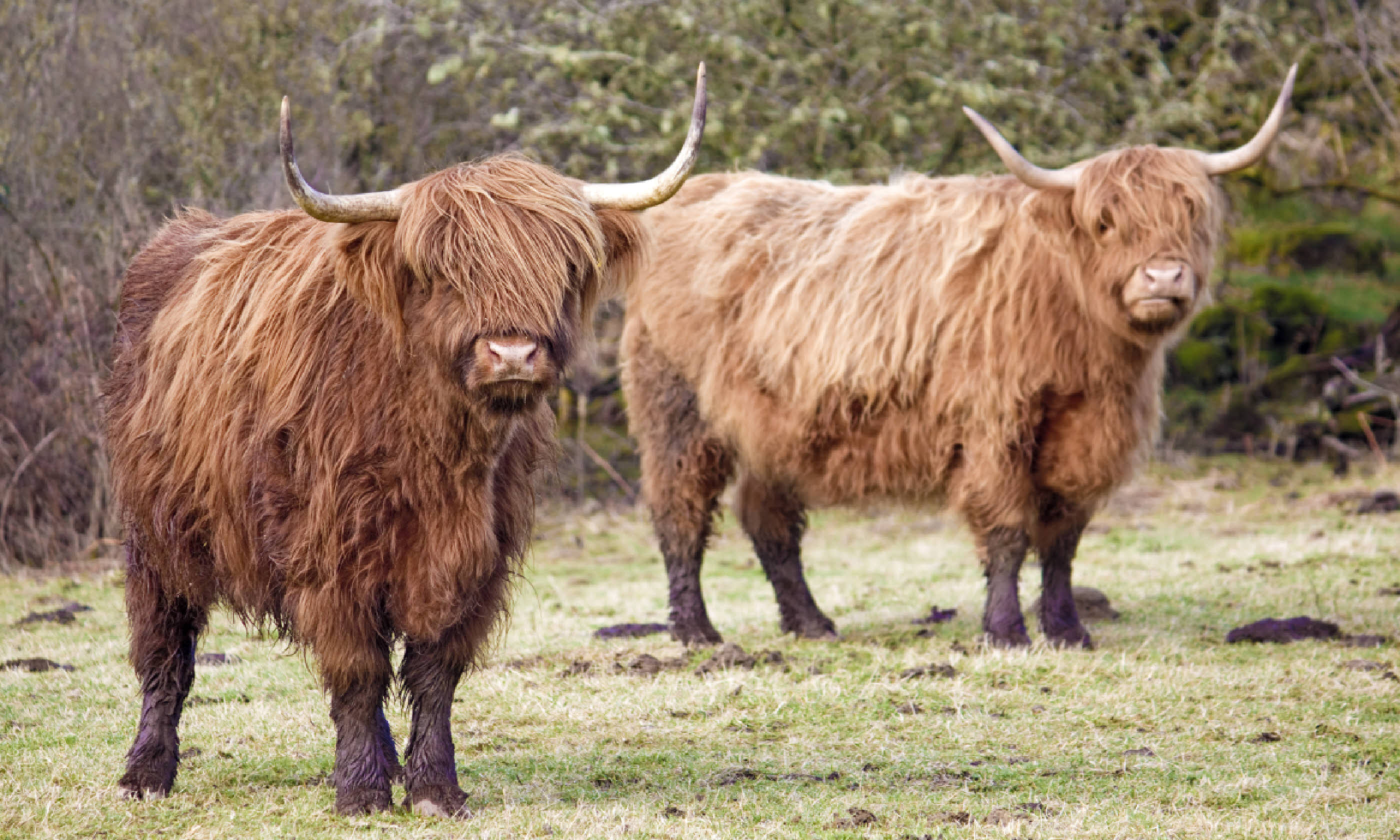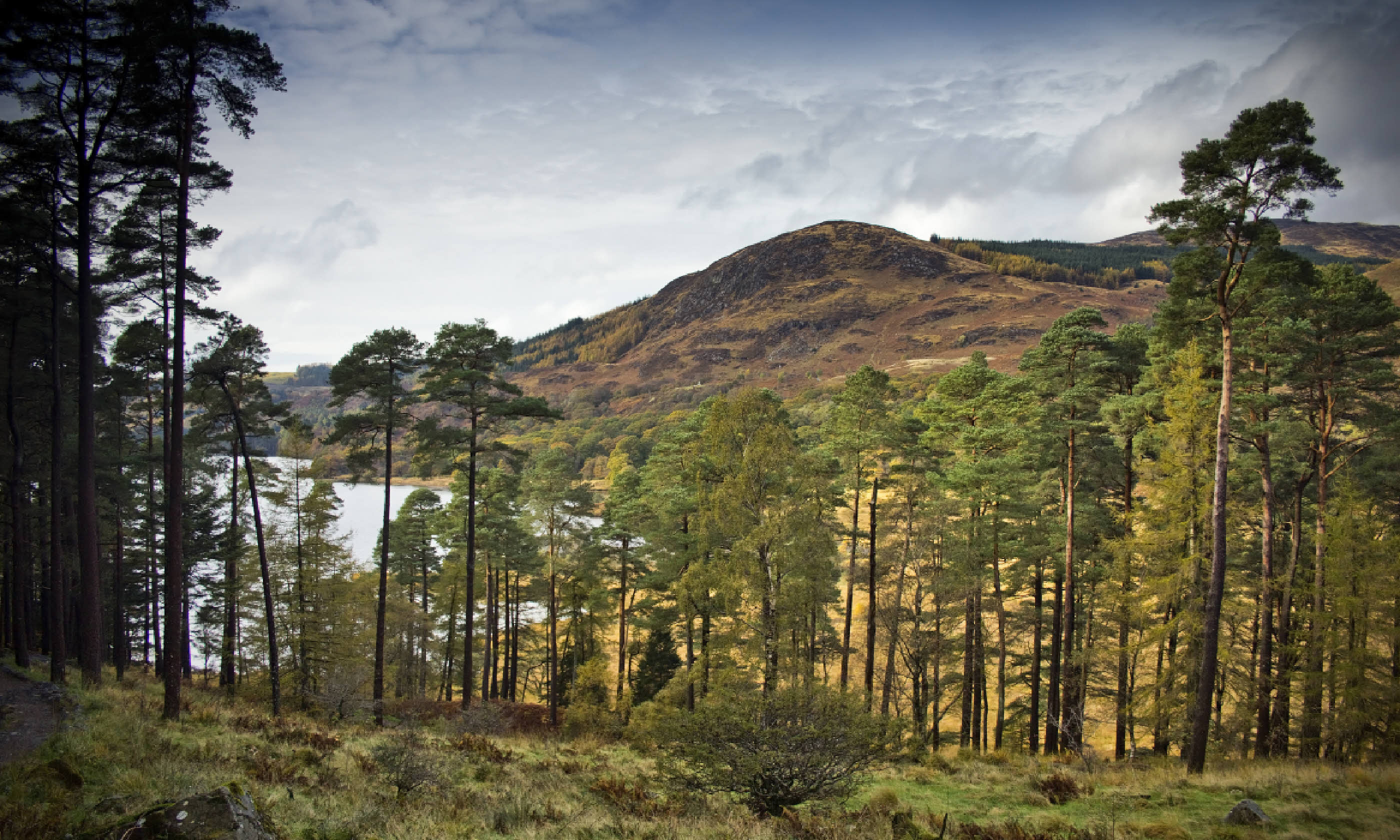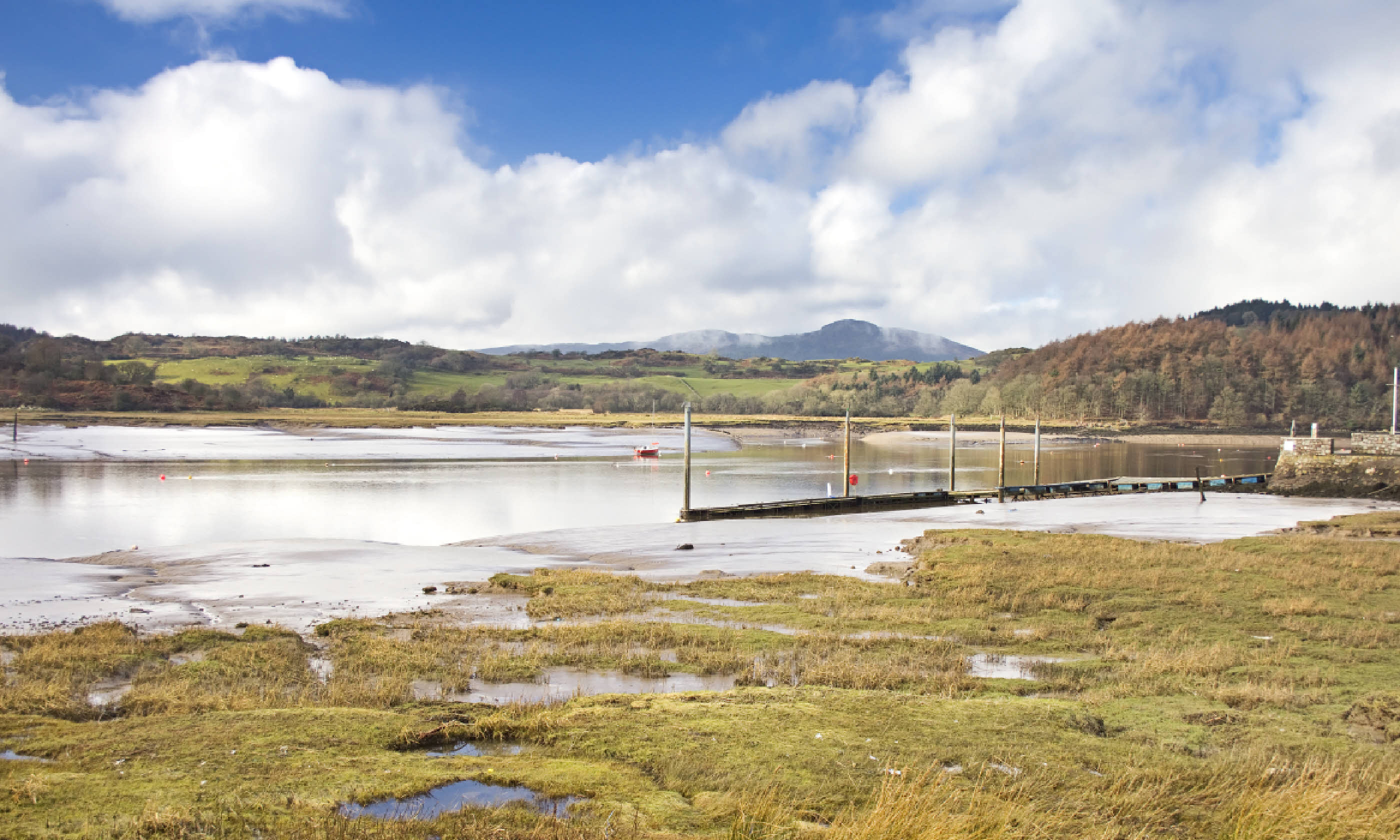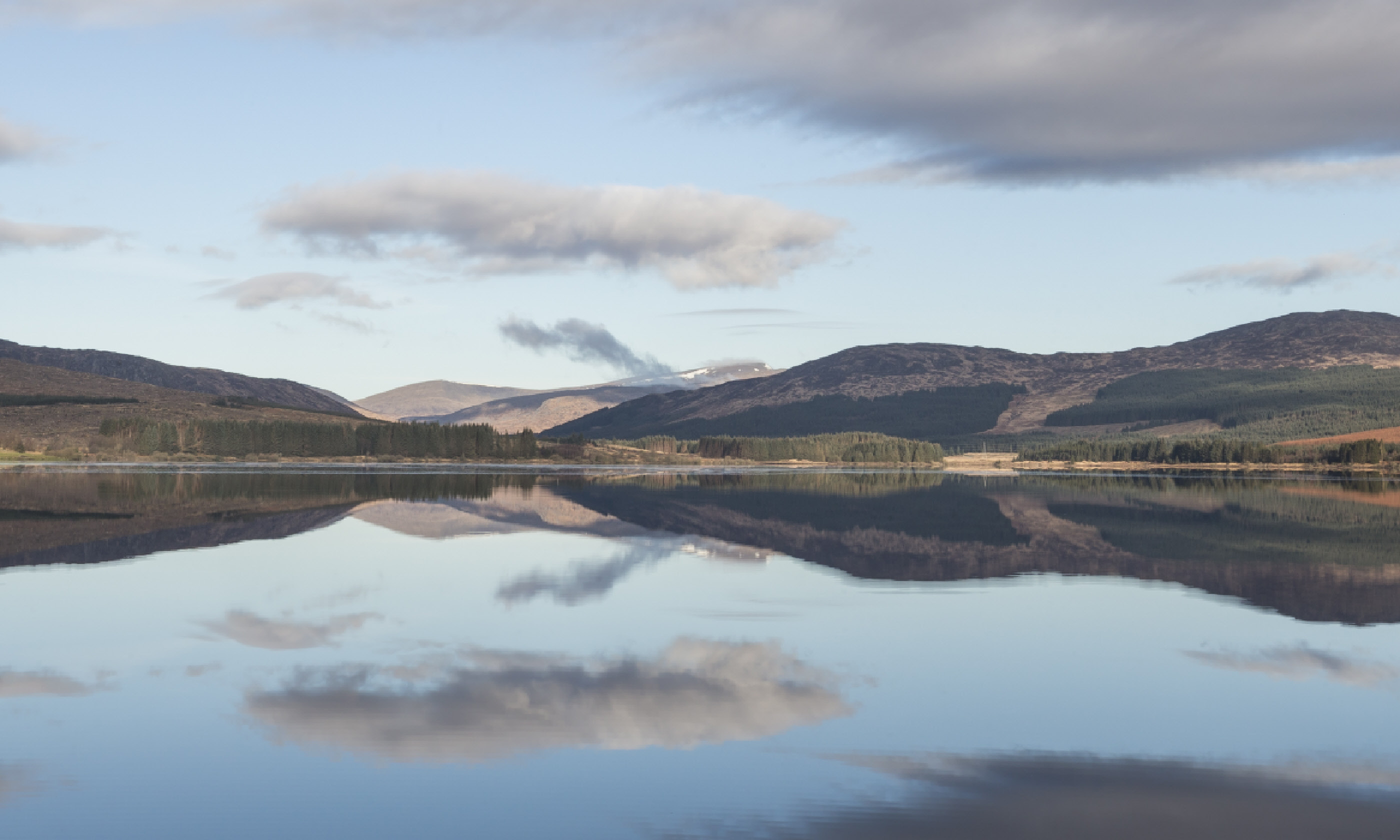
Short break in Dumfries & Galloway, Scotland
The Stewartry of south-west Scotland is particularly super in spring-time, reckons Donald Greig, co-author of Bradt’s new Slow Dumfries & Galloway guide
The night was as black as Galloway stout and I was in danger of walking into the person in front of me. “Look! Over there!” came a whispered alert, seemingly pointless given the darkness. But I had a clever piece of kit: an infrared camera that presents a detailed picture in what looks like negative form, white heat contrasting with cool black surrounds.
‘See wildlife in a totally different light’ says the blurb of Nocturnal Wildlife Tours, founded by Keith and Cowan. The experience is unique in the UK, if not the world. And Cowan should know: he supplies specialist equipment to TV crews and wildlife watchers such as Chris Packham.
For this novel perspective on local wildlife, we headed out from Castle Douglas, in the heart of Dumfries & Galloway, in an adapted Landrover with a camera on the roof and viewing screens inside. Everyone had a hand-held thermal imaging device. Deer grazing, badgers snuffling, mice scurrying – all were spotted, sometimes within feet of our feet. Because the camera reads heat we could see ‘through’ foliage to spy on birds roosting in the trees. A swooping owl and the mere mention of a pine marten had us all in a swoon.
 Scots Pines in Galloway Forest Park
Scots Pines in Galloway Forest Park
Dumfries & Galloway’s Wild Spring Festival is Scotland’s largest wildlife festival, held throughout April and into May. Birdwatching, foraging, badger spotting and wilderness activities all feature, and more besides. The spring brings a particularly intense burst of activity to the area, but come at any time and you won’t be short of choice. The nocturnal wildlife tours run year round.
To get to Dumfries & Galloway, head west from Gretna Green. The area was historically known – and is still fondly referred to – as the Stewartry (from ‘steward’); in the 14th century a steward was appointed by Archibald the Grim, one of the wayward Lords of Galloway, to collect revenues.
The region offers many outdoor pursuits as well as wildlife watching. Nights can be spent star-gazing in the country’s first Dark Sky Park. Just north of Castle Douglas lies lovely Loch Ken, which has a good activity centre on its shores; it offers innovative eco-bothy accommodation (with wood-fired hot tubs) and fine canoeing.
With over 320km of coast, a range of habitats, peaks worth climbing and, in the far west in particular, a climate to rival Cornwall’s, the region may come as quite a surprise.
Essential info
When to go: Year round. Dark nights for nocturnal wildlife and stars. Glorious in spring and summer.
Getting there: Train London- Dumfries via Carlisle (from £104 return). From Edinburgh, train to Lockerbie; from Glasgow, train to Dumfries or Stranraer. Getting around: Regular bus services cross the region (500/X75 Carlisle to Stranraer). A car is essential to cover ground quickly.
Where to stay: Loch Ken Ecobothies, from £350 for three nights.
Craigadam B&B, Castle Douglas, from £47pppn.
Gelston Castle, from £120, two nights self-catering.
Where to eat: Marrbury Smokehouse on the A75 between Gatehouse and Newton Stewart for smoked fish, meats, pâtes and cheeses.
Creebridge House Hotel, Newton Stewart, for Galloway beef steak pie and Stewartry lamb. Craigadam, for a meal you’ll won’t forget in the farmhouse’s sumptuous wood-panelled dining room.
More info: wildlifetours.co.uk, for night tours;
scotland.forestry.gov.uk, for Galloway Forest Park;
lochken.co.uk, for Galloway Activity Centre.
READER OFFER: Bradt is offering Wanderlust readers 35% off its new Slow Dumfries & Galloway guide, co-written by the author of this piece (£11.99). Order at bradtguides.com and with coupon code DGWAN at checkout. Offer valid until 31 July 2015.
 Kippford harbour (Shutterstock)
Kippford harbour (Shutterstock)
Day 1: Water, wildlife & walking
Head to Loch Ken’s Galloway Activity Centre for a guided wildlife canoe trip. Look for red kites, which are drawn to the nearby feeding station. Replenish in nearby Castle Douglas with a pie, a pint and a tour at the small, independent Sulwath Brewery.
Hop down to Kippford, with its marina and cottages, for a 30-minute coastal walk to Rockcliffe, where Victorian villas are set around a rocky bay. There are two paths: one lower, one further up the hill. Take one out, return by the other. There are superb views from both over ‘Rough Firth’, where Urr Water meets Solway Firth. On a warm day look for adders basking in the sun.
There are waterside pubs in Kippford and a tea room in Rockcliffe. A few miles north of Kippford, the Glenisle Inn at Palnackie is home of the annual flounder-tramping championships (summer). A pint of Twisted Thistle or a dram of the Clynelish single malt might hit the spot (note: the alcohol limit for drivers is lower in Scotland than in England). For dinner, try the
Willow Tree for bistro-style food with an emphasis on local ingredients.
Day 2: Galloway Forest Park
Galloway Forest Park is the UK’s largest Dark Sky Park, renowned for having low light pollution. Spend the day on the 30km Queen’s Way road through the park, heading west from New Galloway, stopping en route.
First, stop at Clatteringshaws Loch visitor centre. It overlooks the water and has woodland ‘surfboards’, which are designed to make star-gazing more comfortable. Next is the Red Deer Range hide. April-October is the best time for viewing; in autumn listen for the roar of the stags at the start of the rut.
At Wild Goat Park, chances are the occupants will wander down from the hills to greet you. It’s not a developed attraction but there’s parking next to the goat habitat. Don’t feed them bread – veg are preferred!
Murray’s Monument obelisk is visible from the road a little further on and commemorates shepherd boy Alexander Murray (1775-1813) who became Professor of Oriental Languages at Edinburgh University. The short but steep climb is worth it for the views. Continue to Newton Stewart, and then return along the coast road via Kirroughtree to go star-gazing with a Forestry Commission Scotland ranger (booking required).
 Clatteringshaws Loch
Clatteringshaws Loch
Day 3: Coastal cliffs & the artists' town
One of the region’s most iconic stretches of coastline lies in the Stewartry. Make the most of it by walking the circular loop along the clifftop from Balcary Point to Rascarrel Bay and back on the inland path (8km; park at the south end of Auchencairn Bay). The trail is narrow in parts, and you’ll need a head for heights, but the views along the coast and out to Hestan Island are not to be missed. For lunch either take a picnic (there’s a well-placed clifftop bench along the coastal stretch) or pop into the Balcary Bay Hotel near the parking area.
Suitably invigorated, spend the afternoon in Kirkcudbright. Regarded by many as the jewel in Dumfries & Galloway’s crown, it’s known as the Artists’ Town thanks to a rich artistic heritage. Visit
Broughton House, which, from 1901 until his death in 1933, was home to EA Hornel – one of the ‘Glasgow Boys’ school of artists, known for their impressionist works. Also, explore ruined 16th-century MacLellan’s Castle, including its dark vaults.
Round off the day at
Polarbites for a wicked quayside fish’n’chip supper; no average chippy this: scallops, lobster and crab might be on the menu.



